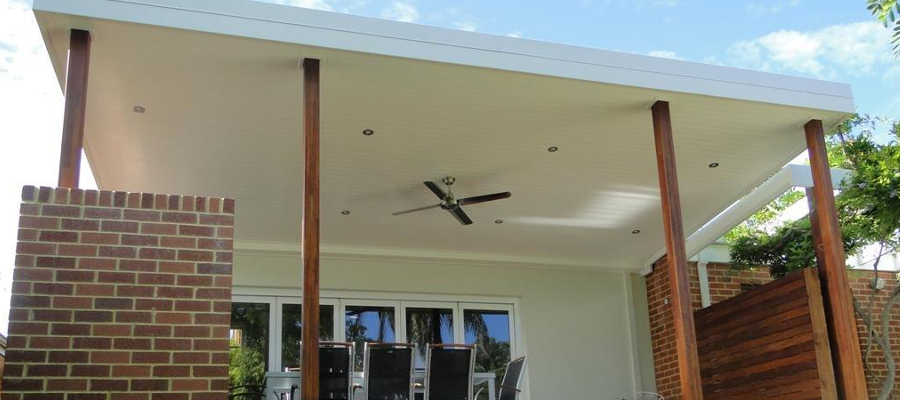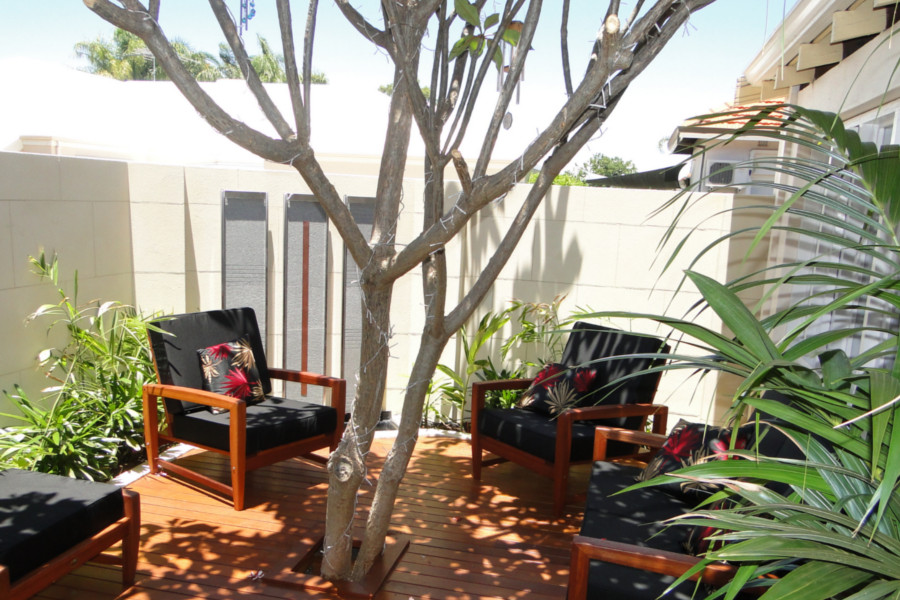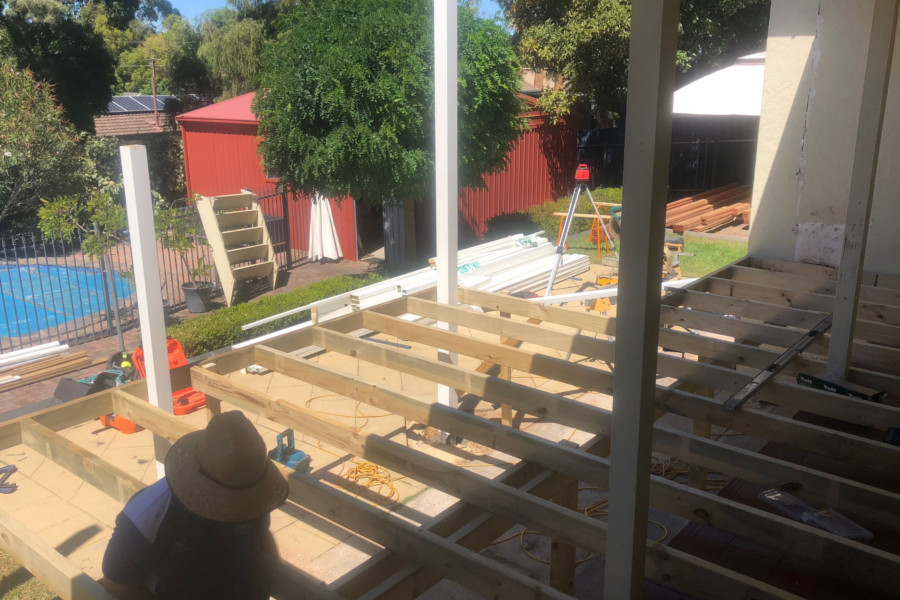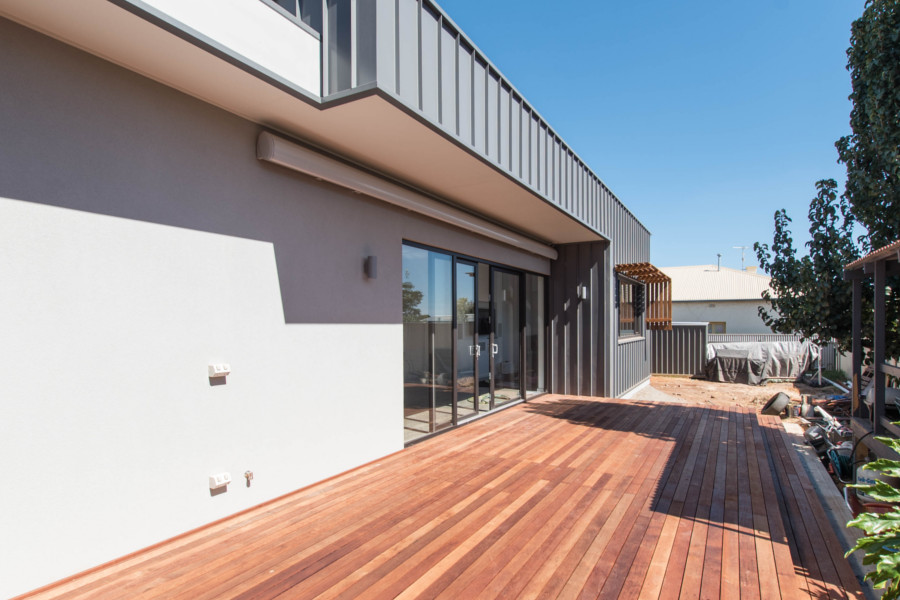
It’s time so start tackling that roofing job you’ve been putting off, and now you want to figure out how many roof sheets you need. This guide will show you how it’s done. It’s a pretty simple process and should be easy for even the most challenged of weekend warriors.
Working out how many sheets you need is a basic mathematical exercise. If you’ve already built your pergola you’ll need a tape measure, and a sturdy step ladder. Be sure to take your safety into consideration when using the ladder. If you have a friend that can hold the other end of the tape measure, this will make the job a little easier and increase the accuracy of your measurements.
If you haven’t built the pergola yet you can work straight from your plans. A standard Polycarb sheets actual width is 860mm in Corrugated, and 810mm in Greca. But after the recommended overlap, you’re left with 760mm of coverage in both profiles.
Divide the length of your roof area by 0.760 to determine the number of sheets you need. For example, a structure that’s 6.0m long is 6000 / 760 = 7.89 sheets. The next step is to round up to the nearest whole number for this example would be 8. You will need to round up even if it were say 7.1 sheets as you need to cover all of the area. If you have a gable roof structure you will need to double the number of sheets so that you can cover both sides with roofing.
Note: Suntuf polycarb sheets can come in 1210mm cover too, but are limited to the Greca profile only and Diffused Grey colouring only.
Now that you’ve got the number of sheets worked out you need to determine what length of sheet you need. In doing so, you need to consider the angle of the roof. If you have already built your roof (or have a list of quantities) this is simple. Running your tape measure along the long length of your rafter and allowing at least 50mm overhang into the gutter will give you the length you require. Corrugated or Greca roofing requires a min of 5 degree fall from the top of the structure to the gutter (this works out to be 88mm per meter fall). You should also remember the general builders rule, it’s always best to check twice before cutting.
If you have no plans and are designing your structure yourself the working out of lengths gets a little more complicated. Most houses are a 22 degree pitch in Australia, so if you’d like your pergola to mirror your home’s pitch you will need to work out the length of your rafters using our old friend Pythagoras theorem. To start with you will need to know the length of two sides of your triangle (in this case half of the width of your pergola, and the height of the ridge from the beam) On a structure with a roof pitched at 22 degrees you can ascertain the height using information from this page For example if half of the width of your pergola is 2.9m the height of the ridge would be 1.2m (being that at 22 degrees the height of the slope is 40.4% of the stated width).
Polycarbonate sheets are sold in increments of 300mm – 600mm lengths. If your roof happens to be 2.5m wide , you will need to purchase 2.7m sheet. Check our webshop for the available lengths to see what best suits your needs. Sheets are easy to cut, you can use a sharp pair of shears, scissor’s, or a fine tooth circular saw blade.
How to determine what roofing accessories I need?
Now that you have your sheet quantity, it’s time to calculate how many fixings you’ll need. Roofing sheets are typically supported by timber or steel members known as ‘purlins’ It’s recommended that purlin size and spacing’s follow the specifications of the roof sheets you are installing. For example with Greca profile polycarbonate sheets, maximum purlin spacing for an end-span is 900mm, maximum spacing for a mid-span is 1200mm, but generally keeping all the purlins at equal spaces, under these maximum spacings ( for this example being 900mm) will give the roof a uniform look and won’t exceed the maximum specifications of the sheets. Polycarbonate screws are what’s known as Clear fix / Polymate Screws. These screws have a smart design which pre drills a 10mm hole to allow for the expansion and contraction of the sheets that will occur with temperature change. To calculate the number screws you will need, multiply the square metreage of your roof by 8. A 30 square metre roof in this example would need 240 screws
The next item you will need is Purlin Tape. Purlin tape is basically a strip of foam which has an adhesive on one side, which sticks to the top of your purlins. The idea of this is to keep the expansion noise of your roof sheets to a minimum. Tape is sold in 20 meter rolls , so for example If you have 5 purlins at 6.0m long, you’re going to need 30m which will require 2 rolls.
For skillion type roofs, you may need to consider back channel & infill which is designed to be put on the high side of the sheets against your home to prevent wind and rain blowing back over the sheet, making it water tight. It also gives the sheet a neat appearance on the edges and the profiled infill strips stop vermin and insects from making a home in the more protected parts of your structure. If you use infill and backchannels you will need enough to cover the length of your structure.
Purchase all your roofing requirements from the Softwoods online roofing store.



